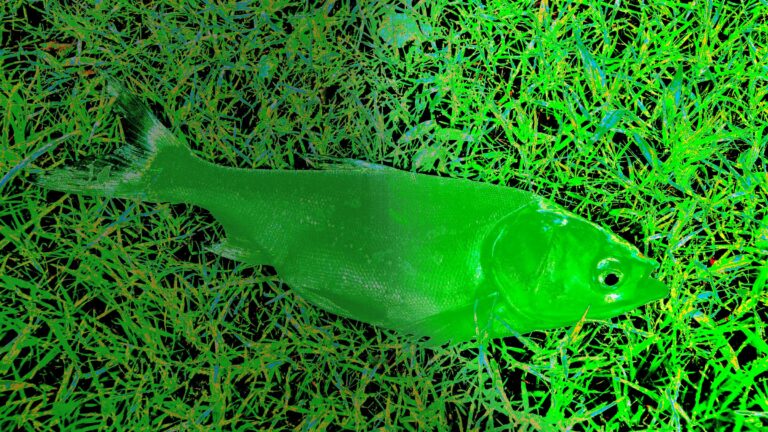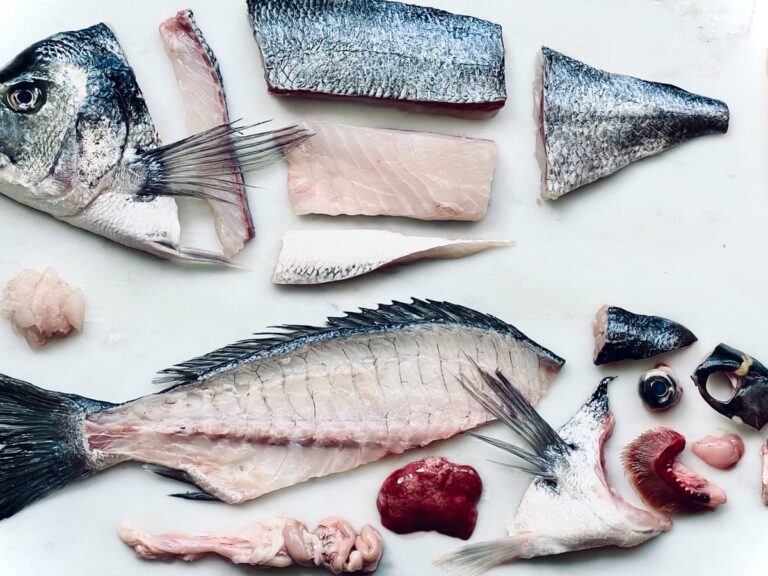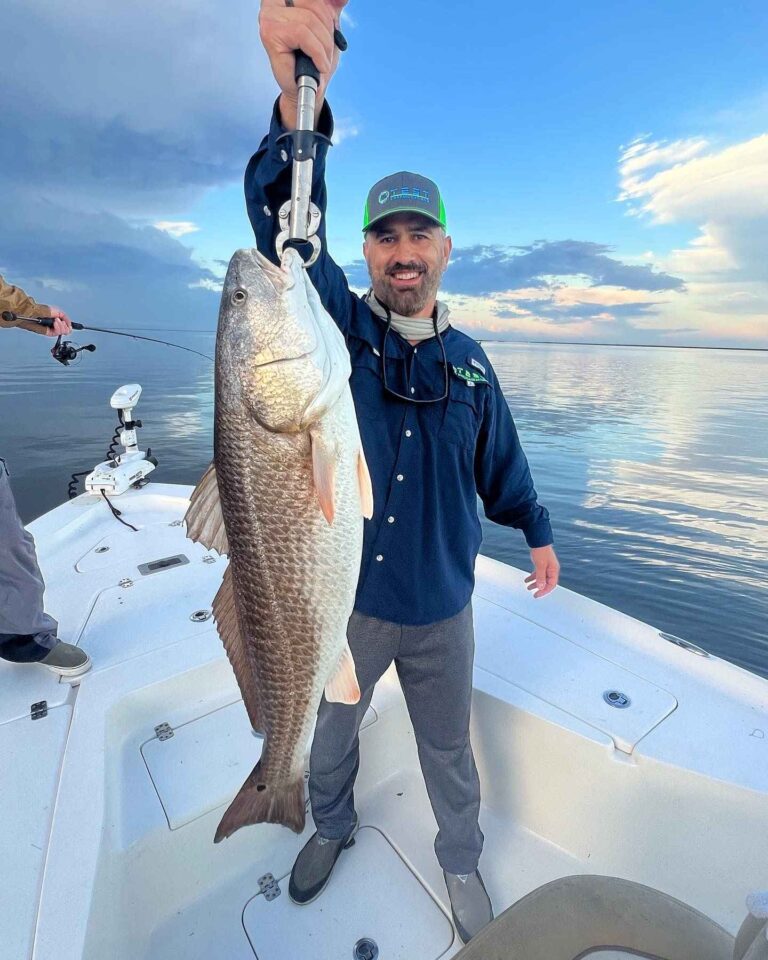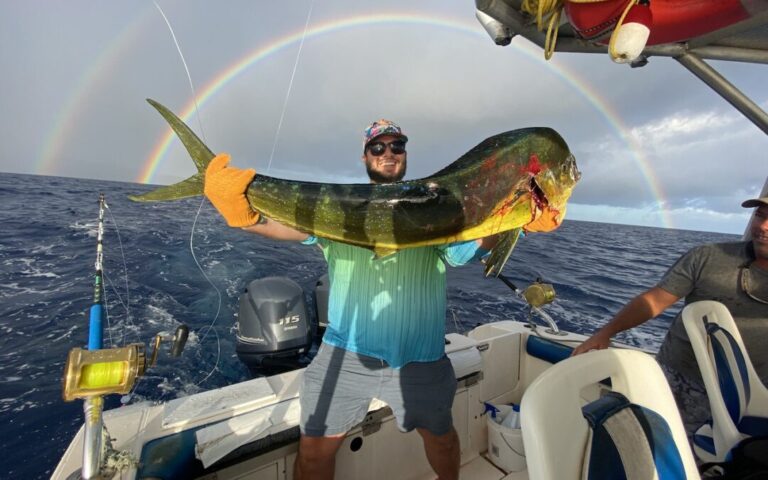To handle and release deep sea fish, use proper handling techniques and release the fish quickly and safely back into the water. Deep sea fishing requires careful handling to minimize injury and stress on the fish.
By following best practices and using the right equipment, you can ensure the survival of the fish population and promote sustainable fishing practices. We will discuss the importance of handling deep sea fish properly and provide tips on how to release them back into their natural habitat with the least amount of harm.
So let’s dive in and learn how to handle and release deep sea fish responsibly.
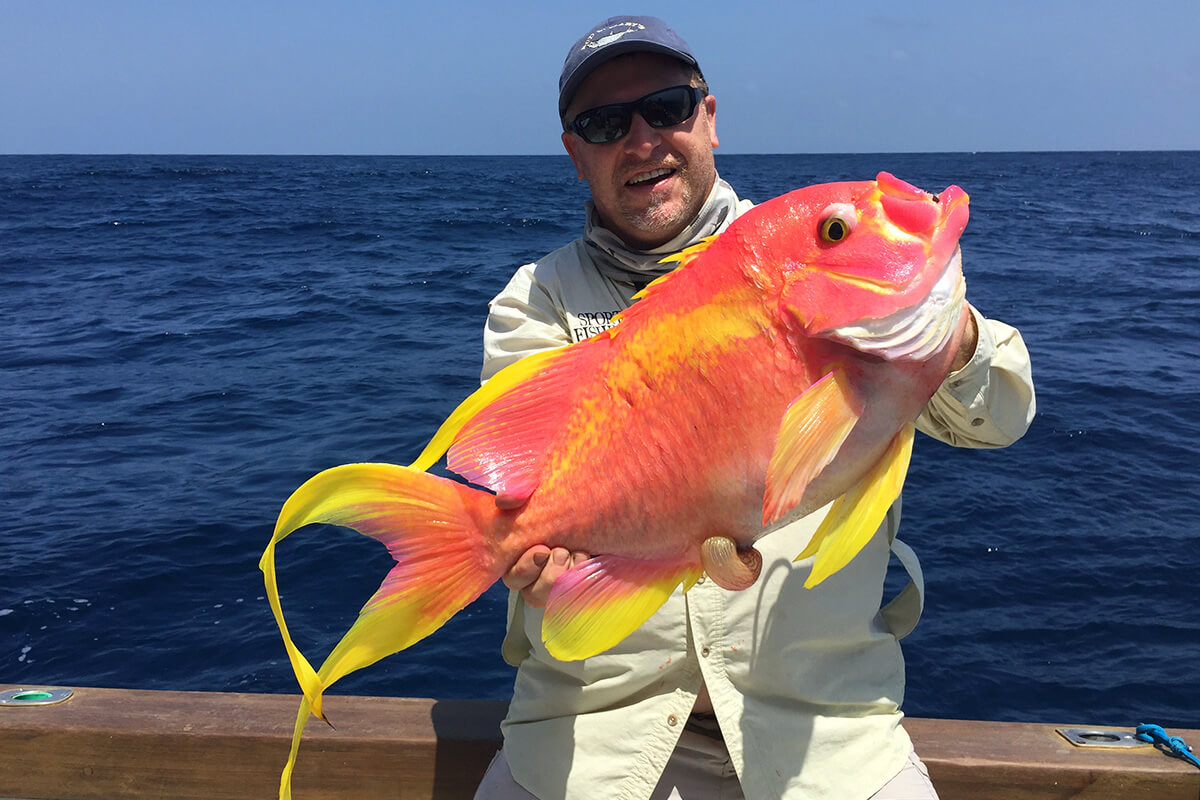
Credit: www.floridasportsman.com
Understanding The Importance Of Proper Fish Handling
Deep sea fishing can be an exciting and fulfilling experience for anglers, but it also comes with a significant responsibility: handling fish correctly. The way we handle and release deep sea fish has a direct impact on the preservation of fish populations and ecosystems.
By minimizing stress and trauma to the fish, we can ensure their survival and contribute to the sustainability of our oceans. Here’s why handling deep sea fish correctly is crucial:
Why Handling Deep Sea Fish Correctly Is Crucial
Properly handling deep sea fish is essential for several reasons:
- Preservation of fish populations and ecosystems:
- Sustainable fishing practices rely on the preservation of fish populations and the balance of ecosystems.
- By handling deep sea fish correctly, we can minimize the impact on fish populations and help in maintaining the delicate equilibrium of marine ecosystems.
- Minimizing stress and trauma to the fish:
- Improper handling and release techniques can cause significant stress and trauma to deep sea fish.
- Stress can affect a fish’s immune system, making it more susceptible to diseases and infections.
- By handling fish gently and minimizing their time out of the water, we can reduce stress and increase their chances of survival.
- Ensuring the survival and future of the species:
- Proper fish handling techniques increase the survival rate of released fish.
- When fish are caught and released correctly, they have a greater chance of surviving and reproducing.
- This contributes to the sustainability of fish populations and ensures the future of the species.
- Respecting ethical and legal responsibilities:
- As responsible anglers, it’s important to respect ethical and legal responsibilities.
- Many fishing regulations require the proper handling and release of deep sea fish to ensure their survival and conservation.
- By adhering to these regulations, we can contribute to the overall health and integrity of our marine environment.
Understanding the importance of proper fish handling is crucial for the preservation of fish populations, the well-being of ecosystems, and the sustainability of our oceans. By applying appropriate handling techniques, we can minimize stress and trauma to deep sea fish, increase their chances of survival, and ensure a bright future for these magnificent creatures.
So the next time you venture out for some deep sea fishing, remember to handle your catch with care and release it back into the wild responsibly.
Essential Equipment For Safe Deep Sea Fish Handling
The Right Tools For The Job
Deep sea fishing can be an exciting and rewarding experience, but it’s crucial to handle fish properly to ensure their health and survival. Having the right equipment is essential for safe deep sea fish handling, and here are some key tools you should consider:
- High-quality gloves for protection: When handling deep sea fish, it’s essential to protect yourself from any potential injuries or accidents. High-quality gloves can provide the necessary barrier between your hands and the fish’s sharp teeth or spines. Opt for gloves made from sturdy materials like latex or neoprene, which offer excellent grip and flexibility while keeping you safe.
- Fish-friendly landing nets: Using a landing net is an effective way to safely remove the fish from the water without causing them harm. Look for landing nets specifically designed for catch-and-release fishing, as they are usually made from soft mesh material that minimizes damage to the fish’s delicate scales and fins. Additionally, make sure to choose a landing net with a large enough hoop size to accommodate the size of the fish you’re targeting.
- Dehooking tools and pliers: Properly removing the hook from a fish’s mouth is crucial to minimize injury and increase their chances of survival. Dehooking tools and pliers are designed to safely and efficiently remove hooks without causing unnecessary harm to the fish. Look for tools with rust-resistant materials and ergonomic handles for ease of use.
Using these essential tools will not only ensure the safety of both you and the fish but also increase the likelihood of successful catch-and-release. Remember, responsible deep sea fish handling is key to preserving the underwater ecosystem and the future of fishing.
So, before you embark on your next deep sea fishing adventure, make sure you’re equipped with the right tools for the job. Happy fishing!
Step-By-Step Guide To Safely Handle And Release Deep Sea Fish
Deep-sea fishing can be an exhilarating adventure, but it’s important to handle and release the fish properly to ensure their survival. In this step-by-step guide, we will walk you through the process of safely handling and releasing deep-sea fish, from assessing their condition to taking photos responsibly.
Let’s dive in!
Assessing The Condition Of The Fish
Before deciding whether to release or keep the fish, it’s essential to assess its condition. Look for signs of exhaustion or injury, as these can impact the fish’s ability to survive upon release. Here’s what to consider:
- Check for labored breathing, erratic swimming patterns, or disorientation.
- Look for injuries such as bleeding, damaged fins, or scale loss.
Deciding Whether To Release Or Keep The Fish
Once you’ve assessed the fish’s condition, you can make an informed decision about whether to release or keep it. Factors to consider include:
- Local fishing regulations and size limits.
- The fish’s species and its value for consumption or trophy purposes.
- Your personal fishing goals and ethical considerations.
Handling The Fish With Care
When handling deep-sea fish, it’s crucial to minimize stress and avoid causing harm. Here are some techniques for proper gripping without causing injury:
- Wet your hands before handling the fish to maintain its slime coat.
- Support the fish horizontally, avoiding excessive pressure or squeezing.
- If using a landing net, choose one with knotless mesh to prevent fin damage.
Avoiding Damage To Fins And Scales
Damaged fins and scales can significantly impact a fish’s ability to swim and survive. Follow these tips to minimize potential harm:
- Avoid touching or pressing directly on the fish’s fins or scales.
- Use gloves or a damp cloth to handle the fish, reducing friction.
- Keep the fish in the water as much as possible to prevent dehydration.
Removing Hooks Safely
If you decide to release the fish, it’s essential to remove the hook quickly and carefully. Here’s how you can do it:
- Use needle-nose pliers or a dehooking tool to minimize injury to the fish.
- Gently twist the hook to disengage it from the fish’s mouth.
- If the fish has swallowed the hook deeply, consider cutting the line near the hook and leaving it, as removal could cause more harm.
Taking Photos Responsibly
Capturing memorable moments with deep-sea fish is part of the experience, but it’s crucial to prioritize the fish’s safety. Follow these tips for responsible photography:
- Minimize the time the fish is out of water for photography.
- Use a damp towel or a photography mat to cradle the fish gently.
- Avoid excessive handling solely for the sake of photography.
Releasing Fish Back Into The Ocean
To increase the chances of survival after release, it’s important to follow a proper procedure. Here are the best practices:
- Hold the fish gently in the water, facing into the current for oxygenation.
- Revive the fish by gently rocking it back and forth to help water flow through its gills.
- Release the fish when it shows signs of strength, swimming away on its own.
By following these guidelines, you can enjoy the thrill of deep-sea fishing while ensuring the well-being and survival of the fish population. Let’s promote responsible fishing practices and preserve our oceans for future generations!
Ensuring The Well-Being Of Deep Sea Fish After Release
When it comes to deep sea fishing, it is not only about the thrill of the catch but also about responsible angling practices. Releasing fish properly is crucial to promote conservation and ensure the long-term sustainability of fish populations. In this section, we will explore the importance of handling and releasing deep sea fish, focusing specifically on how to ensure their well-being after release.
Understanding Post-Release Mortality:
- Post-release mortality refers to the percentage of fish that do not survive after being released back into the water.
- The main goal of catch and release fishing is to minimize post-release mortality, giving fish the best chance of survival.
- While it is true that some degree of post-release mortality is inevitable, proper handling techniques can significantly reduce it.
Factors That Affect Survival Rates:
- The survival of a released fish depends on various factors, including the species, size, water temperature, and the duration of the fight.
- Stress caused by the fight and exposure to air can be particularly harmful to deep sea fish, compromising their ability to recover.
- Handling fish with care and minimizing their time out of the water can increase their chances of survival.
The Importance Of Making Informed Decisions:
- Anglers have a responsibility to make informed decisions when it comes to catch and release fishing.
- Familiarize yourself with the rules and regulations regarding minimum size limits, bag limits, and closed seasons for different species.
- Consider the vulnerability of certain fish species and choose to release those that have a higher chance of survival.
Monitoring And Reporting Your Catches:
- Keeping track of your catches is an essential part of responsible angling.
- By recording details such as species, size, and location, you can contribute valuable information to research and fisheries management.
- Reporting your catches to relevant authorities or participating in citizen science initiatives cultivates a culture of data-driven decision-making.
Contributing Valuable Data To Research And Fisheries Management:
- The data collected from anglers play a vital role in understanding fish populations and their health.
- Fisheries management relies on accurate and up-to-date information to make informed decisions about bag limits, quotas, and conservation measures.
- By sharing your fishing data, you actively contribute to the sustainable management of deep sea fish populations.
As responsible anglers, it is our duty to handle and release deep sea fish properly. By understanding post-release mortality, considering factors that affect survival rates, making informed decisions, monitoring and reporting catches, and contributing valuable data, we can contribute to the conservation and long-term health of our oceans.
Let’s be stewards of the sea and ensure the well-being of these incredible creatures for generations to come.
Conclusion
Handling and releasing deep-sea fish is crucial for the conservation and sustainability of our oceans. By following proper techniques, such as using circle hooks, dehooking safely, and minimizing handling time, we can reduce the harm caused to these magnificent creatures.
Remember to release them with care, ensuring they are in good health and can swim away freely. Recognize the importance of using proper fishing gear, such as non-stainless steel hooks, to minimize injuries and improve survival rates. Educating yourself and others about the importance of responsible fishing practices can help protect deep-sea fish populations for future generations.
By implementing these strategies, we can contribute to the preservation of these fascinating species and maintain the delicate balance of the marine ecosystem. Let’s be mindful of our actions and make a difference in our efforts to conserve our oceans and the extraordinary life within them.



